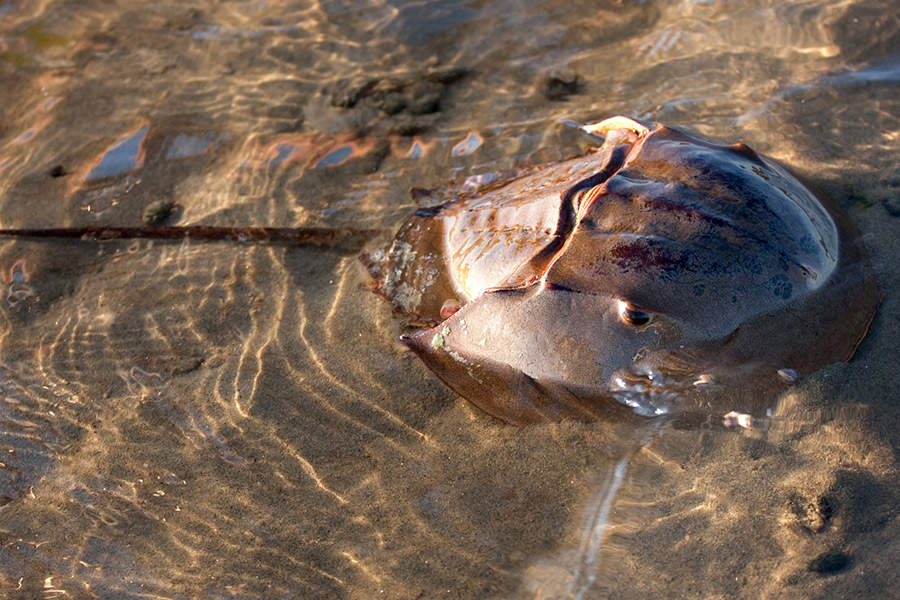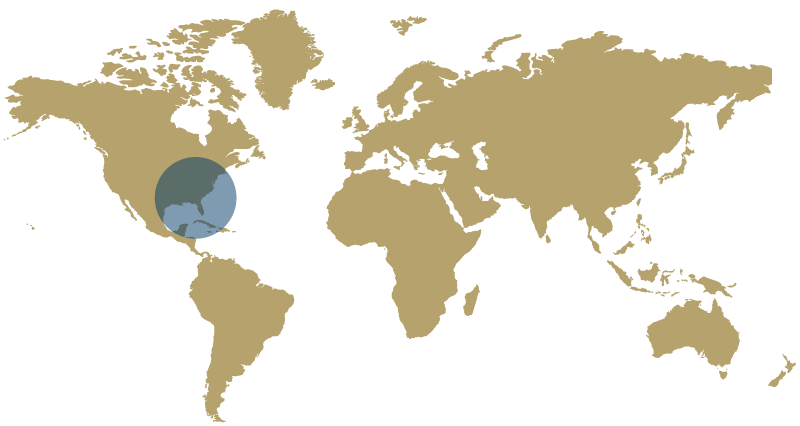
Habitat
Often found on sandy bottoms of shallow seawaters and bays.
Aquarium Location
Touch Tank
Fun Facts
- Referred to as a crab but it is actually more closely related to spiders, ticks, and scorpions.
- Dates back over 600 million years, since before the dinosaurs, and have remained nearly unchanged.
- Feeds mainly at night and can only eat while in motion.
- Instead of jaws, these creatures have tiny hairs to grind their food.
When they molt, the shell splits along the front and they walk out.
Diet
Horseshoe crabs will feed on worms, mollusks and small crustaceans.
Cool Adaptation
The oral or underside of the horseshoe crab contains some very important components for this animal’s survival. Its mouth opening, ten legs and gills are all hidden under the horseshoe-shaped shell. Horseshoe crabs have no mouthparts, only a mouth opening. The mouth is fixed between the last three pairs of its legs and horseshoe crabs depend on these legs to grind up their food for them before it enters their mouth. In fact, horseshoe crabs cannot eat unless they are walking. Once the food is ground by its legs, two small pinchers located near the top of the mouth feed the small pieces into the mouth opening. Horseshoe crabs have 5 pairs of legs, all serving different purposes and all having pinchers with the exception of the last pair. In males, the first pair of legs is modified into swollen hooks that are used to hold on to the female during mating. The next three pairs are all crab-like legs that have weak pinchers at the end, generally used for digging and holding firm in the sediment. The last pair of legs lacks pinchers and are used solely for locomotion to push the crab along the bottom. The Horseshoe crabs’ six pairs of gills that they use to breathe are called book gills because they are broad and flat and lie like pages in a book. They use the gills to get oxygen from the water, but if taken out of the water they can get oxygen from air if their gills are kept moist.
Conservation Connection
Horseshoe crabs play a very important role in oceanic ecosystems and economics. Horseshoe crabs seem to be very common, but scientists have noticed a recent decrease in some populations. There is no exact scientific data on horseshoe crab decline. However, evidence suggests smaller numbers during spawning season on many beaches. More research is needed to ensure the proper management of this ancient species.


